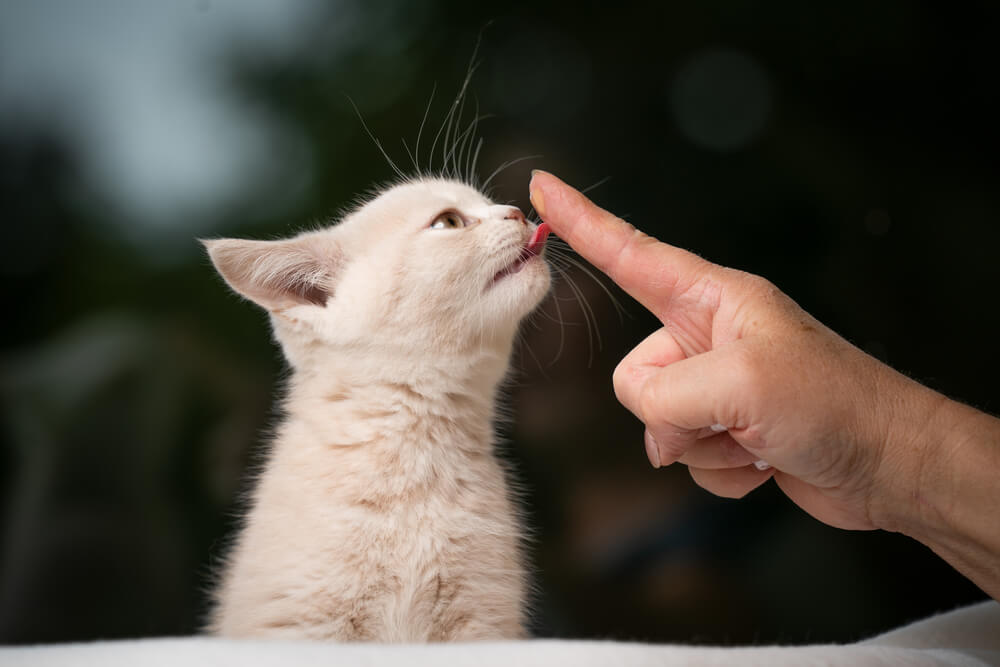Superstimuli in Animals: How Does It Affect Them?


Written and verified by the biologist Cesar Paul Gonzalez Gonzalez
Living beings perceive their environment by means of signals detected by their sensory organs. These stimuli allow them to interpret their environment and organize an appropriate response to each situation. However, everything depends on their intensity, because if they’re excessive (superstimuli) they could cause an unexpected and equally disproportionate reaction. Learn all about superstimuli in animals in this fascinating article!
Superstimuli can affect different animal species, as well as humans. For this reason, it’s good to know all about their possible effects and consequences in daily life. Read on to find out more about this topic.
What is a stimulus?
A stimulus is an internal or external signal that animals can perceive with their natural senses. Its main function is to provide information about the area surrounding the animal so that it can react in the best possible way to ensure its survival.
The type of response varies as the intensity of the stimulus increases or decreases. This means that animals have a certain degree of adaptability that allows them to cope with the varying conditions of their environment. However, some species value strong stimuli more, which can generate conflicts if they’re exposed to so-called superstimuli.

What are superstimuli in animals?
As the name implies, superstimuli are stimuli that exceed the normal intensity of certain events. In turn, they produce an exaggerated response that may or may not affect animals.
For example, the honey bee (Apis mellifera) is attracted to flowers with pollen because they stimulate its vision through colors. However, if an object that emits more striking colorations at ultraviolet wavelengths (superstimulus) is placed in front of it, it’s certain to prefer it, even if it isn’t a flower.
Although the preference for stronger stimuli has an adaptive function, this only applies when the environment is under the same evolutionary pressure. In the case of bees, flowers with bright colors have better rewards for their pollinators, so it’s normal that some are more attractive than others.
The problem arises when the environment changes drastically (habitat destruction, invasive species, etc.) and one or more superstimuli arise that hinder the bee’s perception. Because they’re stronger than normal plant stimuli, they drive them away from the flowers and prevent pollination, which harms both species.
How do superstimuli affect animals?
Not all animals are susceptible to superstimuli, but those that experience them tend to experience negative effects. This is because a large number of parasitic species use this favoritism to invade and affect their hosts, resulting in various detriments.
The best example of this is the cuckoo (Cuculus canorus), a well-known parasitic bird that lays its eggs in the nests of other species for incubation. Although they almost always produce shells similar to those of the host, they also employ contrasting colors to over-stimulate the senses of the surrogate parents and get them to give preference to their young.
In other words, the cuckoo recognizes the favorite stimuli of the birds it parasitizes and produces a super-stimulus (in its eggs) to get them to accept its young. Of course, all this is at the expense of the reproduction and energy expenditure of the host species.

Do superstimuli exist in humans?
Like animals, humans are also susceptible to the effects of superstimuli. However, in our case, the process is a bit more disguised and may go unnoticed. Some of the products that make use of this effect are the following:
- Fast food: Characterized by containing one or more intense flavors that cause a great impact on a person’s perception.
- Arts (paintings, films, photographs, etc.): Based on thrilling the observer by means of colors with different intensities, images, texts, sounds, and other combinations.
- Social networks: These provide different social stimuli that, apart from being super stimulating, can become addictive.
As you can see, superstimuli are found in almost all marketing strategies used today. In fact, that’s the goal – to captivate the consumer’s senses through exaggerated stimuli to get them to buy any product.
Without realizing it, many people fall prey to the exaggerated stimuli that exist in their daily lives. But once you’re aware of it, it’s a little easier to be critical and discriminate what could be harmful or unnecessary in our lives.
Living beings perceive their environment by means of signals detected by their sensory organs. These stimuli allow them to interpret their environment and organize an appropriate response to each situation. However, everything depends on their intensity, because if they’re excessive (superstimuli) they could cause an unexpected and equally disproportionate reaction. Learn all about superstimuli in animals in this fascinating article!
Superstimuli can affect different animal species, as well as humans. For this reason, it’s good to know all about their possible effects and consequences in daily life. Read on to find out more about this topic.
What is a stimulus?
A stimulus is an internal or external signal that animals can perceive with their natural senses. Its main function is to provide information about the area surrounding the animal so that it can react in the best possible way to ensure its survival.
The type of response varies as the intensity of the stimulus increases or decreases. This means that animals have a certain degree of adaptability that allows them to cope with the varying conditions of their environment. However, some species value strong stimuli more, which can generate conflicts if they’re exposed to so-called superstimuli.

What are superstimuli in animals?
As the name implies, superstimuli are stimuli that exceed the normal intensity of certain events. In turn, they produce an exaggerated response that may or may not affect animals.
For example, the honey bee (Apis mellifera) is attracted to flowers with pollen because they stimulate its vision through colors. However, if an object that emits more striking colorations at ultraviolet wavelengths (superstimulus) is placed in front of it, it’s certain to prefer it, even if it isn’t a flower.
Although the preference for stronger stimuli has an adaptive function, this only applies when the environment is under the same evolutionary pressure. In the case of bees, flowers with bright colors have better rewards for their pollinators, so it’s normal that some are more attractive than others.
The problem arises when the environment changes drastically (habitat destruction, invasive species, etc.) and one or more superstimuli arise that hinder the bee’s perception. Because they’re stronger than normal plant stimuli, they drive them away from the flowers and prevent pollination, which harms both species.
How do superstimuli affect animals?
Not all animals are susceptible to superstimuli, but those that experience them tend to experience negative effects. This is because a large number of parasitic species use this favoritism to invade and affect their hosts, resulting in various detriments.
The best example of this is the cuckoo (Cuculus canorus), a well-known parasitic bird that lays its eggs in the nests of other species for incubation. Although they almost always produce shells similar to those of the host, they also employ contrasting colors to over-stimulate the senses of the surrogate parents and get them to give preference to their young.
In other words, the cuckoo recognizes the favorite stimuli of the birds it parasitizes and produces a super-stimulus (in its eggs) to get them to accept its young. Of course, all this is at the expense of the reproduction and energy expenditure of the host species.

Do superstimuli exist in humans?
Like animals, humans are also susceptible to the effects of superstimuli. However, in our case, the process is a bit more disguised and may go unnoticed. Some of the products that make use of this effect are the following:
- Fast food: Characterized by containing one or more intense flavors that cause a great impact on a person’s perception.
- Arts (paintings, films, photographs, etc.): Based on thrilling the observer by means of colors with different intensities, images, texts, sounds, and other combinations.
- Social networks: These provide different social stimuli that, apart from being super stimulating, can become addictive.
As you can see, superstimuli are found in almost all marketing strategies used today. In fact, that’s the goal – to captivate the consumer’s senses through exaggerated stimuli to get them to buy any product.
Without realizing it, many people fall prey to the exaggerated stimuli that exist in their daily lives. But once you’re aware of it, it’s a little easier to be critical and discriminate what could be harmful or unnecessary in our lives.
All cited sources were thoroughly reviewed by our team to ensure their quality, reliability, currency, and validity. The bibliography of this article was considered reliable and of academic or scientific accuracy.
- Álvarez, F. (1999). Attractive non‐mimetic stimuli in Cuckoo Cuculus canorus eggs. Ibis, 141(1), 142-144.
- Labhart, T. (1974). Behavioral analysis of light intensity discrimination and spectral sensitivity in the honey bee, Apis mellifera. Journal of comparative physiology, 95(3), 203-216.
- Staddon, J. E. R. (1975). A note on the evolutionary significance of” supernormal” stimuli. The American Naturalist, 109(969), 541-545.
- Vidya, T. N. C. (2018). Supernormal stimuli and responses. Resonance, 23(8), 853-860.
- Barrett, D. (2010). Supernormal stimuli: How primal urges overran their evolutionary purpose. WW Norton & Company.
This text is provided for informational purposes only and does not replace consultation with a professional. If in doubt, consult your specialist.








